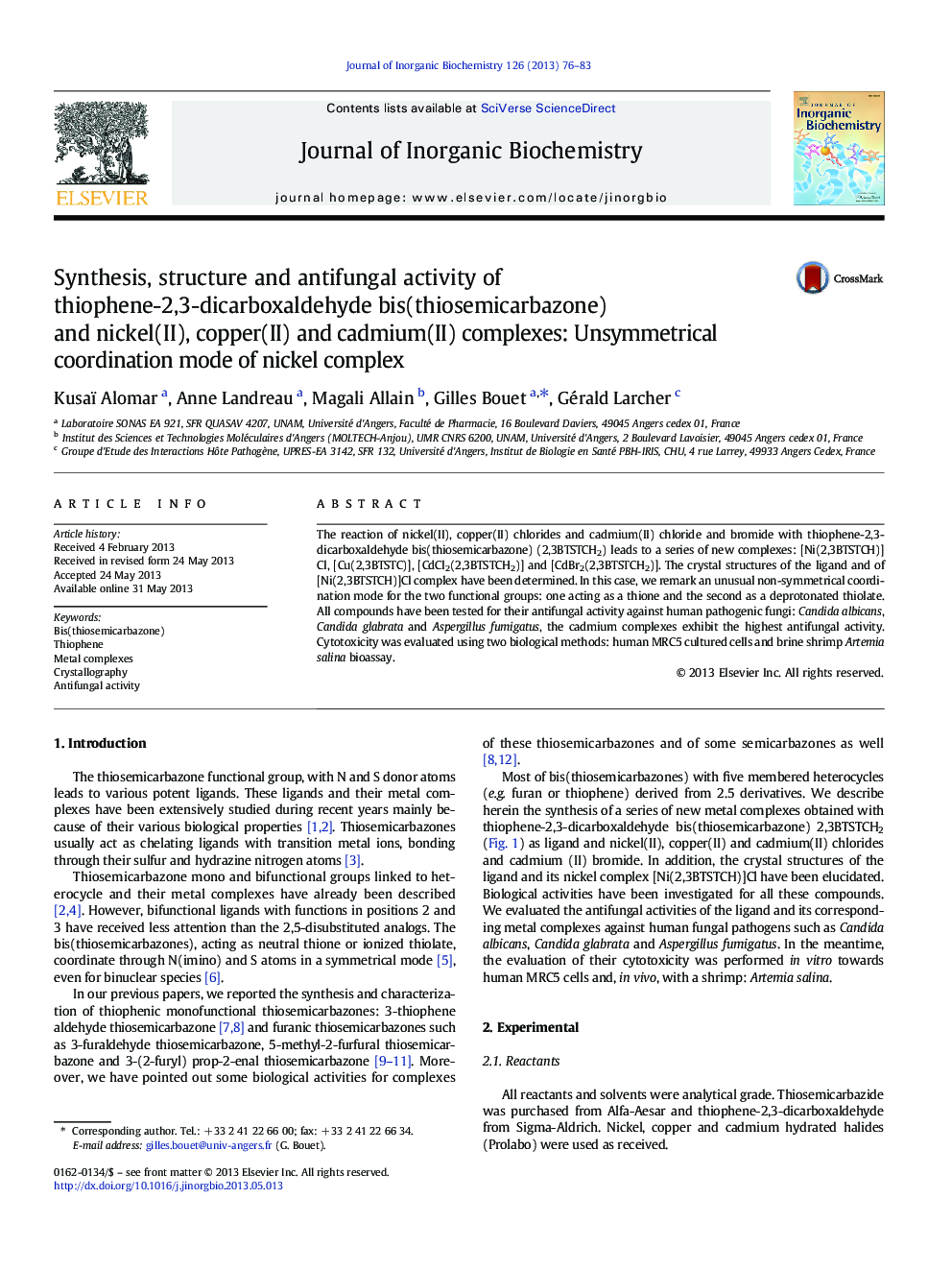| Article ID | Journal | Published Year | Pages | File Type |
|---|---|---|---|---|
| 1317561 | Journal of Inorganic Biochemistry | 2013 | 8 Pages |
•Complexes with 2,3-disubstituted thiophene.•Unsymmetrical coordination (thione and deprotonated thiolate) for Ni(II) complex.•Antifungal activity of cadmium complexes.•Low toxicity of cadmium complexes towards cultured cells and Artemia salina.
The reaction of nickel(II), copper(II) chlorides and cadmium(II) chloride and bromide with thiophene-2,3-dicarboxaldehyde bis(thiosemicarbazone) (2,3BTSTCH2) leads to a series of new complexes: [Ni(2,3BTSTCH)]Cl, [Cu(2,3BTSTC)], [CdCl2(2,3BTSTCH2)] and [CdBr2(2,3BTSTCH2)]. The crystal structures of the ligand and of [Ni(2,3BTSTCH)]Cl complex have been determined. In this case, we remark an unusual non-symmetrical coordination mode for the two functional groups: one acting as a thione and the second as a deprotonated thiolate. All compounds have been tested for their antifungal activity against human pathogenic fungi: Candida albicans, Candida glabrata and Aspergillus fumigatus, the cadmium complexes exhibit the highest antifungal activity. Cytotoxicity was evaluated using two biological methods: human MRC5 cultured cells and brine shrimp Artemia salina bioassay.
Graphical abstractThe reaction of nickel(II) with thiophene-2,3-dicarboxaldehyde bis(thiosemicarbazone) (2,3BTSTCH2) gave [Ni(2,3BTSTCH)]Cl complex with an unusual non-symmetrical coordination mode for the two functional groups: one as a thione, the second as a deprotonated thiolate. The cadmium complexes showed the highest antifungal activity with low toxicity towards human MRC5 cultured cells and brine shrimp Artemia salina.Figure optionsDownload full-size imageDownload as PowerPoint slide
